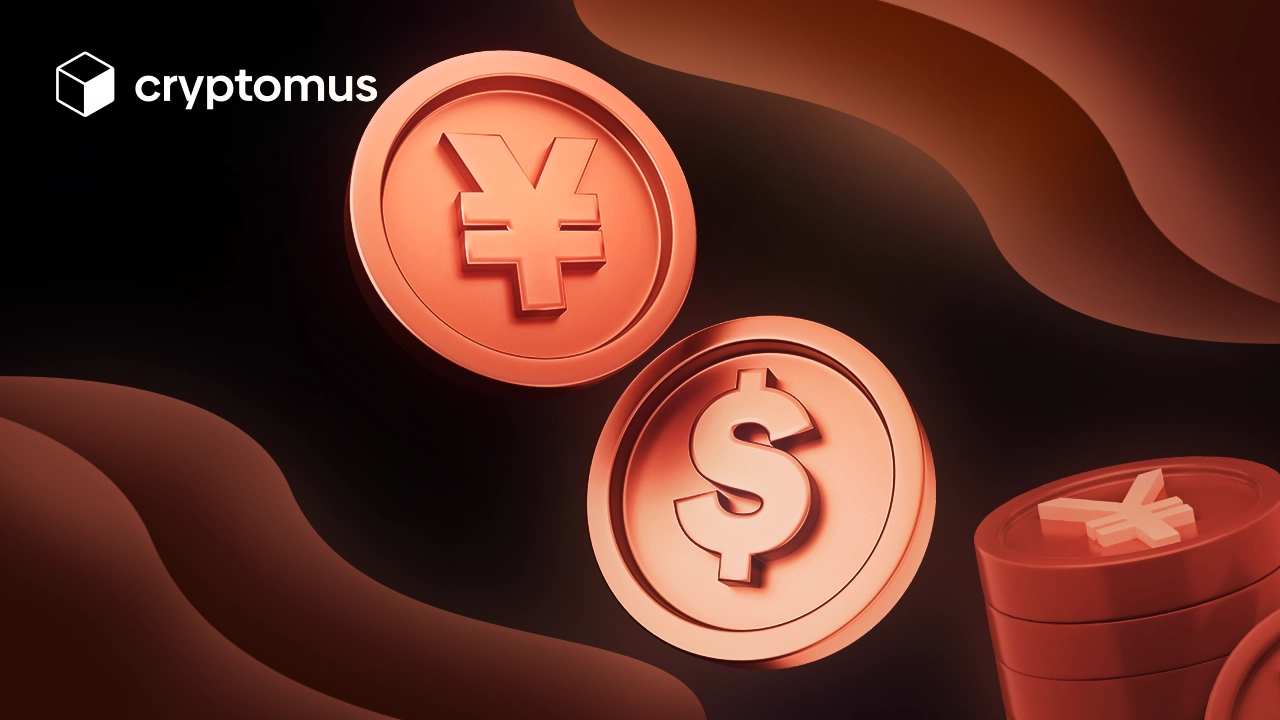
Dollardan tashqari stabilkoinlar: Evro, Yen va boshqalarni tekshirish
Stablecoins an'anaviy moliyaviy tizimda duch keladigan muammolarga innovatsion echimlarni taklif qilish orqali pul landshaftiga transformativ o'zgarishlar olib keldi. Turli xil raqamli aktivlarning muhim tarkibiy qismi sifatida stabilkoinlar kriptovalyutalarning o'zgaruvchan tabiati va AQSh dollari, evro, yen va boshqalar kabi fiat valyutalarining barqarorligi o'rtasidagi "ko'prik" bo'ldi.
Ushbu maqolada biz dollar bo'lmagan stabilkoinlarni o'rganamiz va turli valyutalardagi stabilkoinlar moliyaviy operatsiyalarni qanday o'zgartirishini bilib olamiz.
Kriptomoliyani shakllantirishda dollar bo'lmagan stabilkoinlarning roli
Bizning yaqindagi maqoladan biz stabilkoinlarning ikkita asosiy turi borligini bilib oldik. , ulardan biri fiat pulga bog'langan. Ko'p odamlar noto'g'ri o'ylashadi, bu turdagi stabilkoinlar faqat AQSh dollariga bog'langan, chunki eng mashhurlari USDT va USDC shunday qiladi. Ammo boshqa aktivlar ham bor, masalan, yevro stablekoinlari yoki yapon iyenasi stablekoinlari, ular moliyaviy bozorga dollar stabilkoinlari kabi ta'sir qiladi.
Yevropa va Osiyo bozorlaridagi markaziy hukumatlar o‘z mamlakatlariga kriptovalyuta va blokcheyn innovatsiyalarini olib kirish choralarini ko‘rmoqda. Shu sababli, dollar bo'lmagan stabilkoinlarning chiqarilishi ushbu hududlarda mashhurlik kasb etmoqda, chunki ular bizga muqobil valyutalarni (evro yoki iyena) qulay saqlash imkonini beradi, shu bilan birga bizning moliyamiz ustidan to'liq nazoratni taklif qiladi. Shuning uchun evroga bog'langan stablecoin va yen stablecoin dollarga qiziqmaydiganlar uchun mukammal yechimdir.
Butun dunyo bo'ylab Evro, Yen va boshqalardagi stabilkoinlarni tahlil qilish
Evrodagi barqaror tangalar
Agar siz Yevropa Ittifoqida yashasangiz va stablecoinlardan daromad olish yoki investitsiya qilish uchun DeFi birjalaridan foydalansangiz, siz evro fiatingizni evro bilan ta'minlangan stabilkoinga almashtirib, buning evaziga passiv daromad olishingiz mumkin. Bu bilan evro-stabilkoinlar kriptovalyuta o'zgaruvchanligi muammosini hal qilish uchun mo'ljallangan. Evroga bog'langan holda, bunday tangalar narx barqarorligini ta'minlaydi, ya'ni sizda 100 evro-stablecoin bo'lsa, ular har doim 100 evroga teng ekanligini bilasiz. Bu kripto evro stabilkoinini ushlab turish va ishlatish uchun yanada bashoratli va ishonchli qiladi.
Hozirgi vaqtda STASIS EURO (EURS) va Tether EURt (EURT) eng yaxshi evro stabilkoinlari orasida eng mashhurlari hisoblanadi. Ikkala token ham Ethereum platformasida ERC-20 standartiga muvofiq yaratilgan va ularni ishlab chiquvchilar Yevropaning eng yirik auditorlik va konsalting kompaniyalari tomonidan zaxiralarning shaffofligini va muntazam tekshiruvlarini e’lon qiladilar. EURSning bozor kapitallashuvi 130 million dollardan ortiq, EURT kapitallashuvi esa taxminan 40 million dollarni tashkil qiladi.
Yendagi stabilkoinlar
Yen barqaror tanga tez va oson hisob-kitob qilish, qulay saqlash va tranzaktsiyalarni amalga oshirish imkoniyatini ochib beradi va, albatta, fiat pul bilan qo'llab-quvvatlanib, xavfni kamaytirishga hissa qo'shadi. Bundan tashqari, ushbu tangalarning blokcheynda mavjudligi va sherik birjalar tarmog'i bilan integratsiyalashuvi butun dunyo bo'ylab foydalanuvchilar o'zlarining afzal ko'rgan usullarida stablecoin yen tokenlari bilan muammosiz o'zaro aloqada bo'lishlarini anglatadi.
GYEN va JPY Coin kriptovalyuta dunyosida innovatsion echimlar sifatida ishlaydi. Ular yapon iyenasiga bog'langan va NFT sotib olish yoki kripto aktivlarini real dunyoda tovarlarga almashtirish uchun ishlatilishi mumkin.

Turli valyutalardagi stabilkoinlar tranzaktsiyalarni qanday o'zgartiradi
Yuqorida aytib o'tilgan evro crypto stablecoin va boshqalar tranzaktsiyalarni qayta shakllantiradigan bir qator muammolarni hal qiladi:
- O'zgaruvchanlikni yumshatish
Qog'oz valyutani qo'llab-quvvatlash va evro, yen (JPY) va boshqa valyutalar bilan bog'liq bo'lgan barqaror tanga yoki evro tangani qo'llab-quvvatlash orqali, dollar bo'lmagan stabilkoinlar o'z aktivlarining qiymatini zaruratsiz saqlab qolishga intilayotgan investorlarga katta yordam beradi. dinamik kriptovalyuta sanoatini tark etish.
- Oshkoralikni oshirish
Stabilkoinlarni kriptovalyuta blokcheyniga asoslash qarori shaffoflik istagiga mos keladi. Muomaladagi barcha aktivlar va tranzaktsiyalarni har kim bilan osongina bo'lishish mumkinligi sababli, bunday harakat nafaqat kriptovalyuta sanoatidagi muammolarni hal qiladi, balki an'anaviy moliyada mavjud bo'lgan shaffoflik tanqisligiga yechim bo'lib xizmat qiladi.
- Likvidlik va bozor hajmini oshirish
Dollar bo'lmagan stabilkoinlar fiat valyutalari tomonidan qo'llab-quvvatlanganligi sababli ko'pchilikda ishonchni uyg'otadi. Natijada, kriptovalyuta bozorida ushbu tangalarning mashhurligi savdo hajmini va bozor kapitallashuvini oshiradi. Shu sababli, evro stablecoin yoki barqaror tanga iyena bilan o'zaro aloqada bo'lgan bozor ishtirokchilari sonining ortib borishi ko'proq likvidlikka olib keladi va bozorda samaradorlik va adolatli narxni oshiradi.
Evro, Yen va boshqalarda Stablecoinlardan foydalanish strategiyalari
Dollar bo'lmagan stabilkoinlardan foydalanish uchun ko'plab strategiyalar mavjud. Keling, ulardan bir nechtasini ko'rib chiqaylik:
- Inflyatsiyadan himoya qilish
Ko'pgina fiat valyutalari jismoniy tovarlar bilan qo'llab-quvvatlanmaydi, shuning uchun ular inflyatsiyaga duchor bo'ladilar. Va ko'proq fiat valyutalari muomalaga kirgach, ularning qiymati vaqt o'tishi bilan asta-sekin pasayadi. Aynan o'sha paytda sizga nisbatan sekin inflyatsiya sur'atlari bilan mashhur bo'lgan yen yoki yevro stablecoin kerak bo'lishi mumkin. Internetga ulangan har bir kishi stablecoinlarni osongina sotib olishi va inflyatsiya muammosini hal qilishga harakat qilishi mumkin.
- Tranzaksiyani qayta ishlash
Yevro barqaror tanga va boshqalardan foydalanish sizga dunyo boʻylab odamlarga osonlikcha mablagʻ oʻtkazish hamda tovarlar va xizmatlar uchun oʻzingiz yoqtirgan usul va valyutada toʻlashda yordam beradi. An'anaviy bank tizimlarining murakkab tekshirish tartib-qoidalarini yoki cheklovlarini chetlab o'tish.
Ushbu usullar tavsiyalar emas va o'zlarining afzalliklari va kamchiliklariga ega. Shuning uchun, o'z qaroringizni qabul qilish va strategiyani tanlash masalasiga to'liq mas'uliyat bilan yondashish muhimdir.
Evro, iyena va boshqalardagi stabilkoinlarning kelajagi
Stabilkoinlarning kelajagini istiqbolli deb atash mumkin. Biroq, bu ko'p jihatdan ularning bozor kapitallashuvining o'sishiga bog'liq bo'ladi.
Bundan tashqari, faqat dollarga asoslangan garovga ishonishning hojati yo'q, chunki uning qat'iy tartibga solinishi ko'rinishidagi to'siq har qanday vaqtda paydo bo'lishi mumkin. Shu sababli, ko'plab moliyaviy institutlar evro stabilkoin kriptosini va boshqalarni yodda tutishni davom ettirishadi va an'anaviy moliya sanoatida ularni tartibga solish bilan bog'liq muammolarni hal qilishga murojaat qilishlari mumkin. Bu raqamli va fiat valyutalari endi alohida mavjud emas, balki yagona moliyaviy dialogning bir qismiga aylanadigan asosiy bozorga barqaror aktivlarning integratsiyalashuvini osonlashtirishi mumkin.
Maqolaga baho bering








Izohlar
0
Fikr qoldirish uchun tizimga kirgan bo'lishingiz kerak